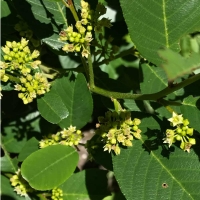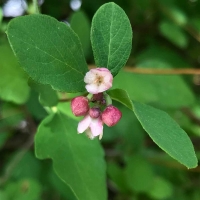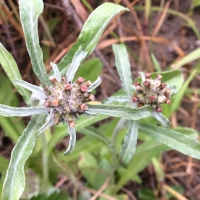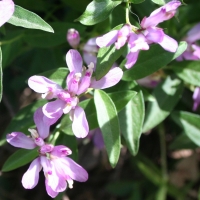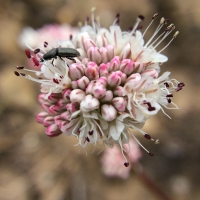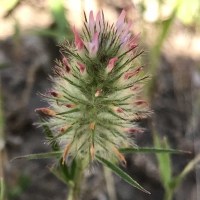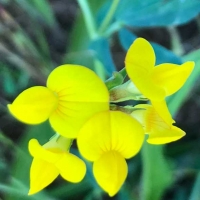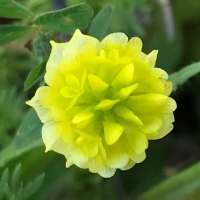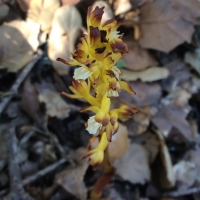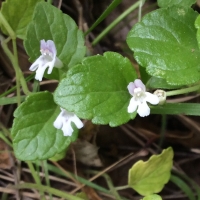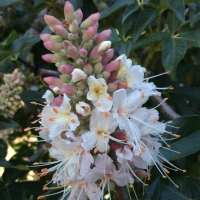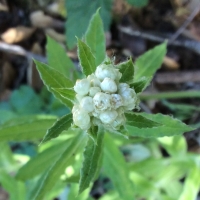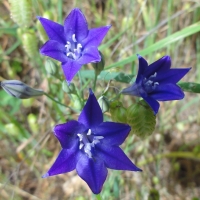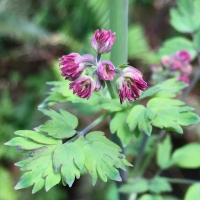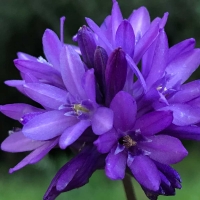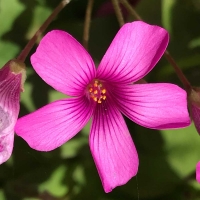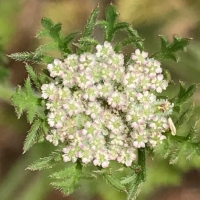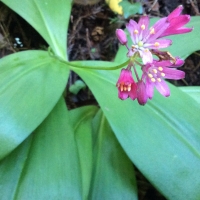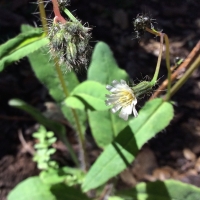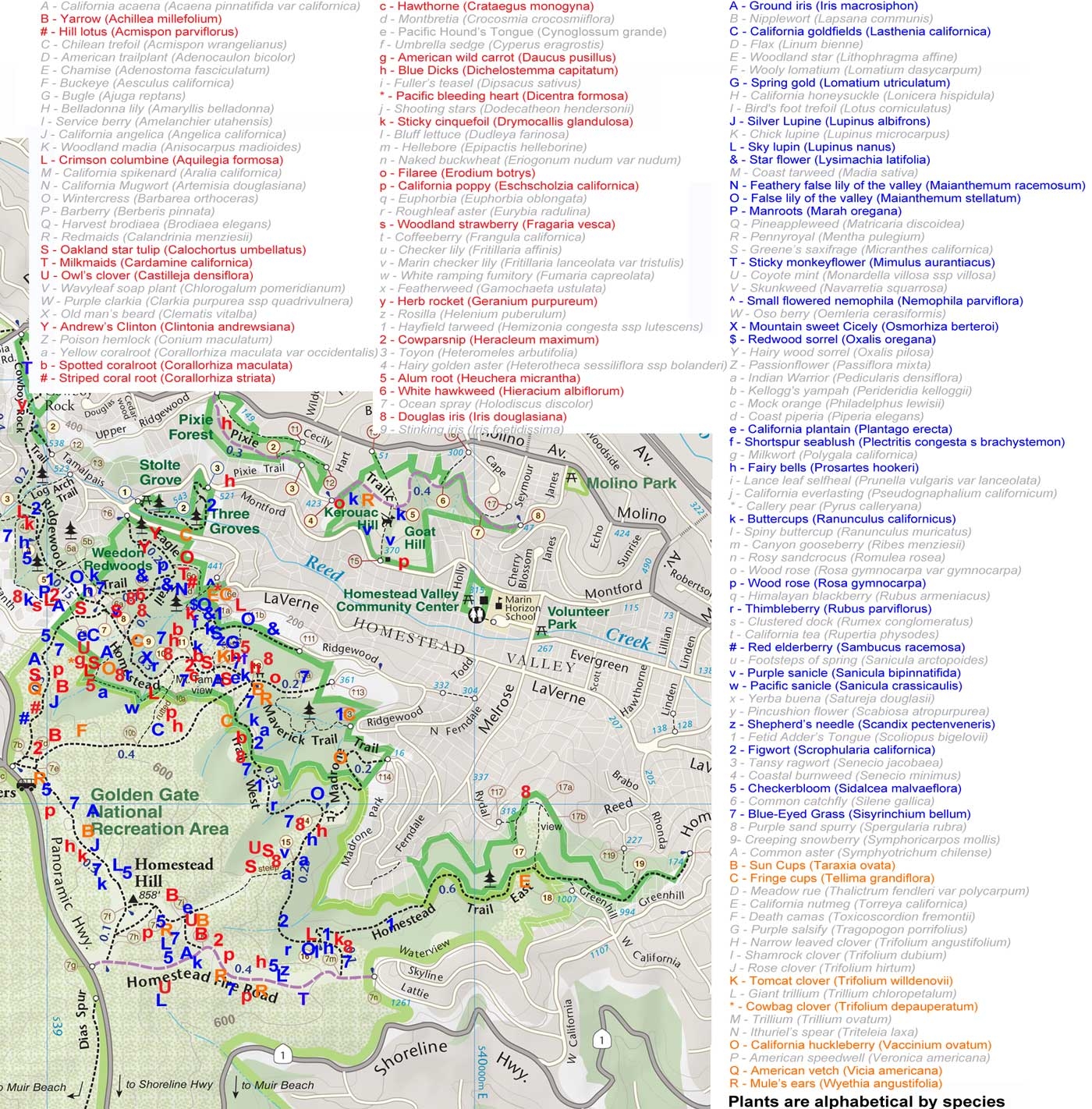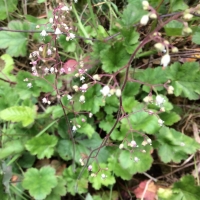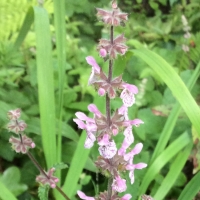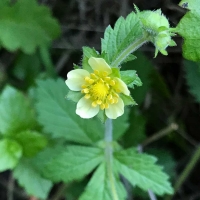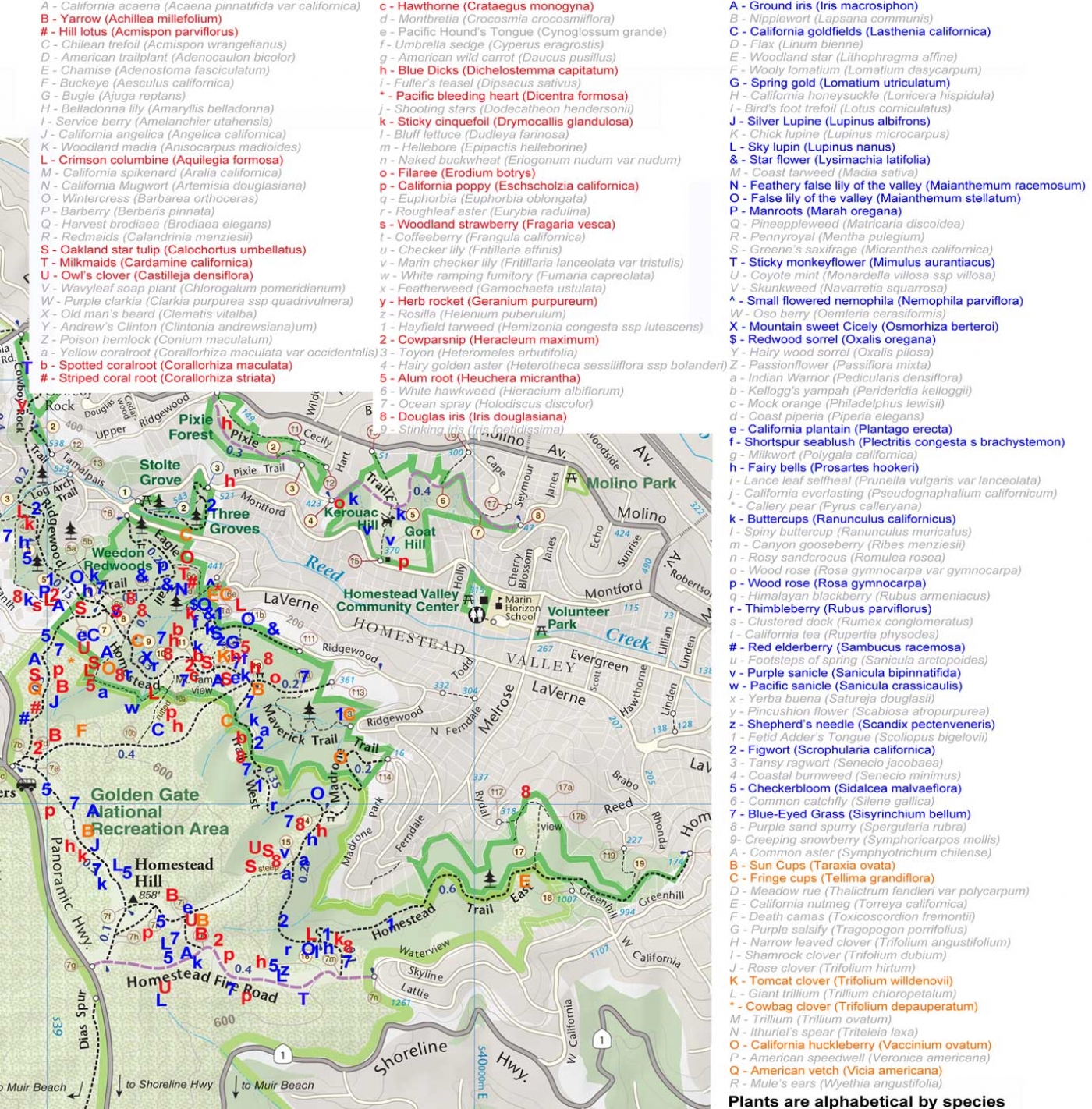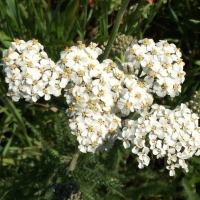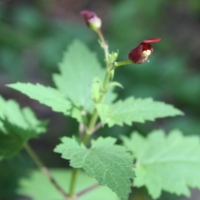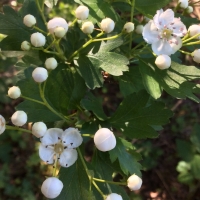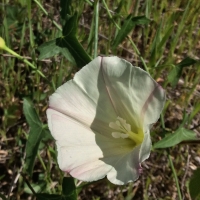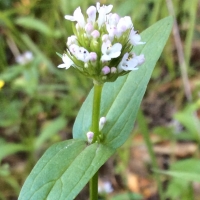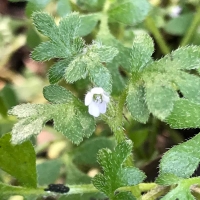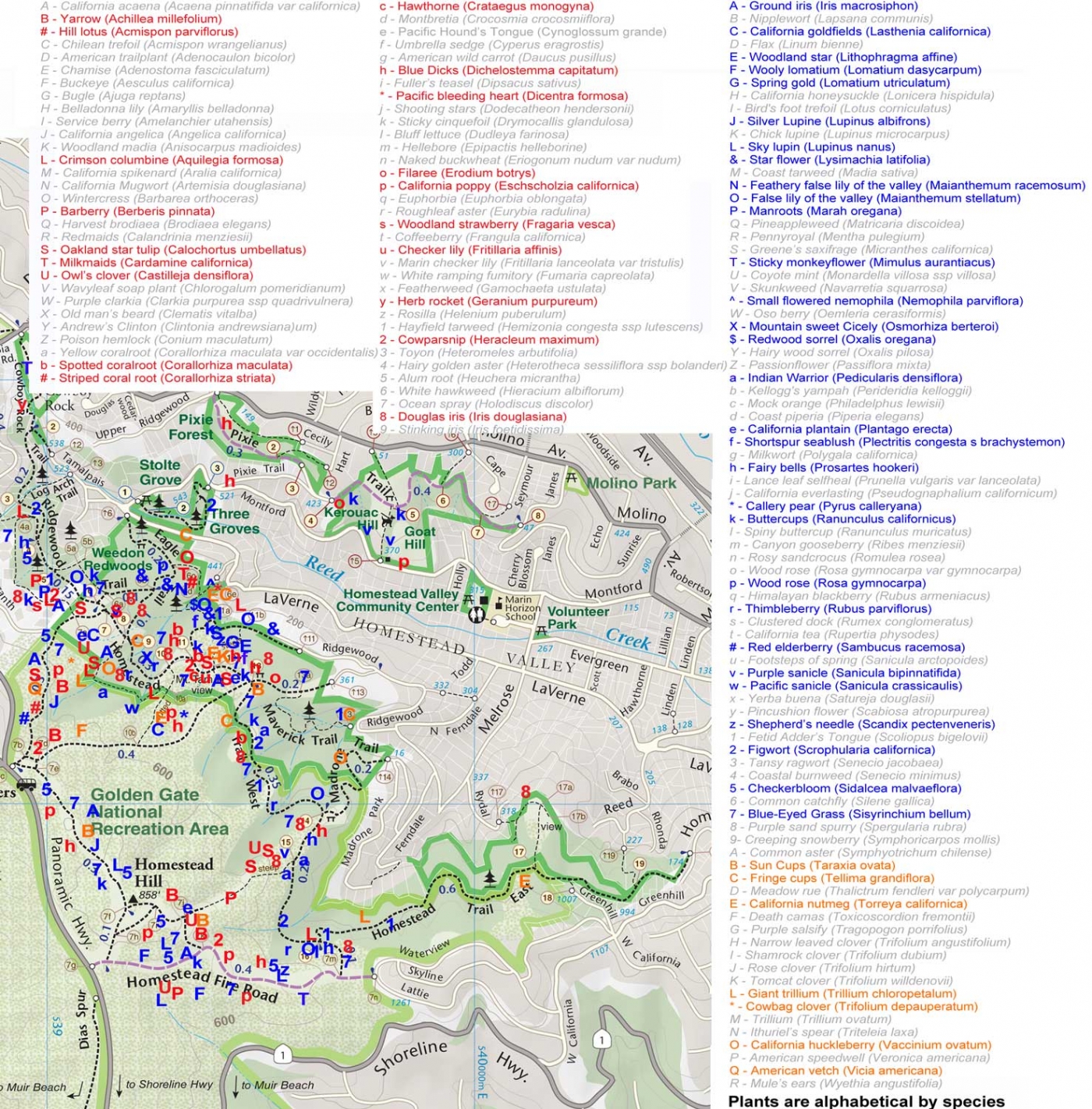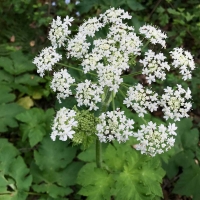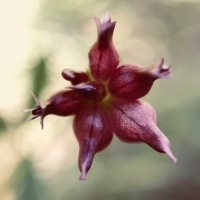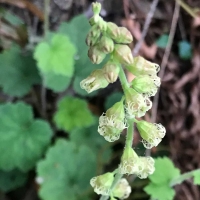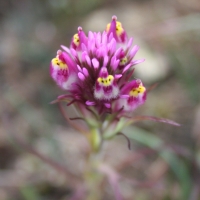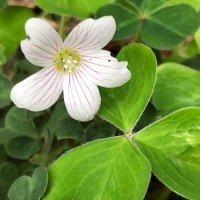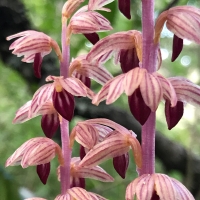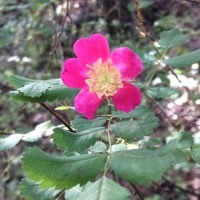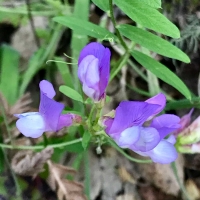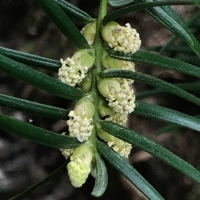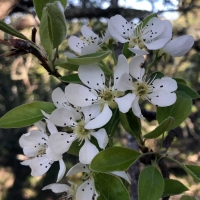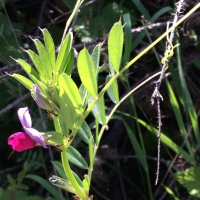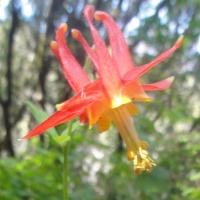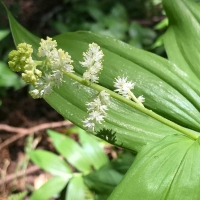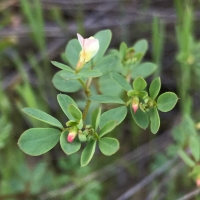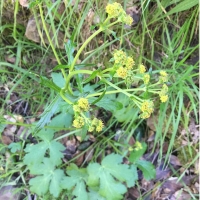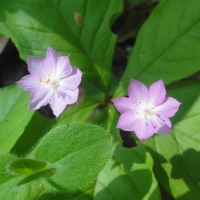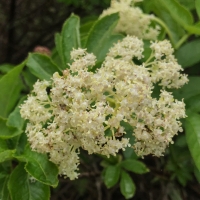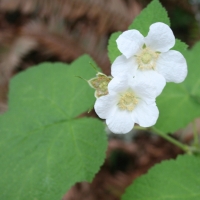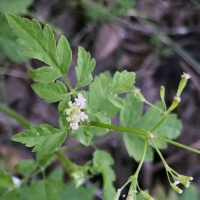NEW
– Bird’s foot trefoil, native of Eurasia, blooms bright yellow in disturbed areas.
– California coffeeberry has small clusters of white flowers. This waxy leaved shrub is a common presence in the forests.
– California tea has purple-tipped flowers and is blooming beside the trail on the way up to 11.
– Creeping snowberry’s small pink bell flowers are blooming in the forests.
– Featherweed has a brown tufted center flower with silver furred leaves.
– Milkwort is blooming with purple flowers.
– Naked buckwheat has tight pink flower clusters and blooms in meadows.
– Narrow leaved clover, native of Eurasia, has a large clover flowers tipped in pink.
– Shamrock clover, native of Europe, has pretty yellow flowers.
– Wavyleaf soap plant blooms with long open white flowers at the end of a long stalk.
– Yellow coralroot is blooming at 15.
– Yerba buena, has small white flowers on this delicate creeping plant.
Forests
Starting
– Hedgenettle, a tower of purple flowers, is in the mint family. This grows all over in Homestead.
– Spotted coralroot with its red stalk and many orchid-shaped flowers is coming up in forests.
Peaking
– Alum root with its froth of dainty white bell flowers is blooming in forests.
– Andrew’s clinton is blooming in the Weedon Redwoods. See it on the bank above Laverne up from the waterfall in Stolte Grove.
– Forget-me-nots, native to Europe, is one of our most successful invaders. Easy to pull, easiest to identify when it’s flowering, so pull it then.
– Fairy bells cream flowers hang below the leaves of this woodland plant.
– False lily of the valley is coming up all over and brightening the forest floor with its white star flower.
– Manroot, a native vine with large maple-shaped leaves is blooming white as it climbs.
– Miner’s lettuce one of our most popular edibles, has a small white flower. Claytonia had a false start with the early season rains but is coming on well now that they are picking up.
– Pacific bleeding heart is blooming under the redwood trees in the sliver of Land Trust between 435 and 441 Laverne.
– Pacific sanicle with its showy bright foliage has mustard flower clusters.
– Redwood sorrel is blooming near the redwood in the sliver of Land Trust between 435 and 441 Laverne.
– Small flowered nemophilia is blooming with small white flowers in forests.
– Star flower has dainty pink flowers and blooms in forests among the carpets of False lily of the valley.
– Thimbleberry, a shrub with soft maple-shaped leaves blooms in forests with a flat white flower.
– White flowered onion*, edible and native to the Mediterranean, is blooming in wet spots with its white cone flowers. Pull it up by the roots if you can.
– White hawksweed with its white flowers is blooming in forests.
– Wood rose blooms bright on rangy rose bushes in the forests.
Fading
– California huckleberry with its small white lantern flowers is blooming in forests.
– Fringe cups has lovely lobed foliage with its fringed flowers on a tall stalk.
– Pacific pea with pink and white flowers is blooming in forests
– Wood sweet-cicely’s small white flowers fade to form long edible seed pods.
Forest edges
Starting
– Meadow rue has small pink fringe flowers and delicate foliage.
– Purple woodsorrel, native of South Africa, blooms with a magenta flowers.
– Sticky monkeyflower is blooming orange on bushes in meadows. It will bloom throughout the summer heat when its dark leaves will become sticky.
– Woodland strawberry blooms are starting now where there is sun, will persist for months in different habitats as they warm.
Peaking
– California blackberry is blooming with paper-white flowers, on a thinner, trailing vine than Himalayan blackberry.
– Figwort, a great plant for insects blooms with a small maroon flower.
– Purple sanicle and its magenta puff flowers blooms in forests along the Homestead Trail
Fading
– Crimson columbine is blooming at the edge of the forest below 11.
– Douglas iris with blooms from pale cream to rich purple is blooming in the forests
– Sourgrass, native to South Africa, is blooming up on the ridge. Although fun to chew on for kids, this plant is a very successful non-native spreading in wet locations where natives might otherwise grow.
Meadows
Starting
– American vetch is blooming purple in the meadow grasses up on the ridge.
– Buckeye trees with their long cluster flowers are blooming now. Upper Laverne is lined with them and will be a tunnel of flowers soon.
– California everlasting with its white paper-like flowers blooms in meadows.
– California poppy, one of the longest bloomers, is bright orange in meadows up on the ridge.
– Callery pear, native to China, has beautiful white dogwood-like flowers. The fruit, however, is inedible making me wonder if the original farmer who planted it knew it was just for show.
– Checkerbloom’s bright pink is starting to bloom on the ridges of Homestead Hill.
– Common vetch, native to the Mediterranean, has bright purple flowers on a pea vine.
– Common yarrow with its white cluster is blooming up on the ridge.
– Cowbag clover is a tiny purple bloom in the meadow grasses.
– Filaree, native to the Mediterranean, has small purple flowers and blooms in disturbed areas like trails
– French broom, native to the Mediterranean, is one of our most aggressive invaders and also one of the easiest to pull.
– Ground iris is blooming purple in meadows.
– Herb robert, native of the United Kingdom, is blooming purple with a golden center is blooming along trails and in disturbed areas.
– Ithuriel’s spear with its rich blue bell flowers is blooming in meadows.
– Mule’s ears with its bright yellow blooms is starting to bloom in meadows.
– Ookow has large purple flower clusters and is blooming below Amaranth.
– Purple western morning glory is blooming in meadows.
– Red elderberry is blooming with cones of white blooms near the spring on the trail toward Amaranth from 4-Corners.
– Scotch broom, native to Western Europe, one of the most aggressive invaders of our meadows is blooming with its yellow pea flowers. Pull it before it goes to seed if you can.
– Short podded mustard, native to the Mediterranean, has small clusters of yellow flowers on long stalks. In the mustard family, the flowers are delicious.
Peaking
– American wild carrot is blooming in the meadow near Amaranth.
– Blue eyed grass, in the iris family, blooms purple with a yellow center
– California buttercup is starting to bloom bright yellow in meadows.
– Cow parsnip with its large white umbel is blooming in meadows and oak woodlands.
– Field madder, native to the Mediterranean, is one of the very small flowers in the grass of meadows.
– Oakland star tulip one of our rare plants, has a small delicate cup flower well worth scrutinizing in meadows.
– Silver lupine is blooming purple in bushes up on the ridge.
– Sky lupine, bright blue with white accents, is blooming on the ridge.
– Suncups on the ground with yellow flowers is starting down near 13 but will be on the ridge and in meadows soon.
– Tomcat clover with purple flower circles is blooming on the Ridgewood Rock.
Fading
– California plantain almost too small to see but getting very close is rewarded with the many translucent disks of its flower
– Chickweed, native to Europe, medicinal and edible is blooming with its white star flower.
– Hawthorn, native to Europe, is blooming next to the creek on the Homestead Trail near 11.
– Owl clover is a purple tuft in meadows.
Key to map:
I haven’t located plants on on the map if they are very prolific. Find them by their habitat.
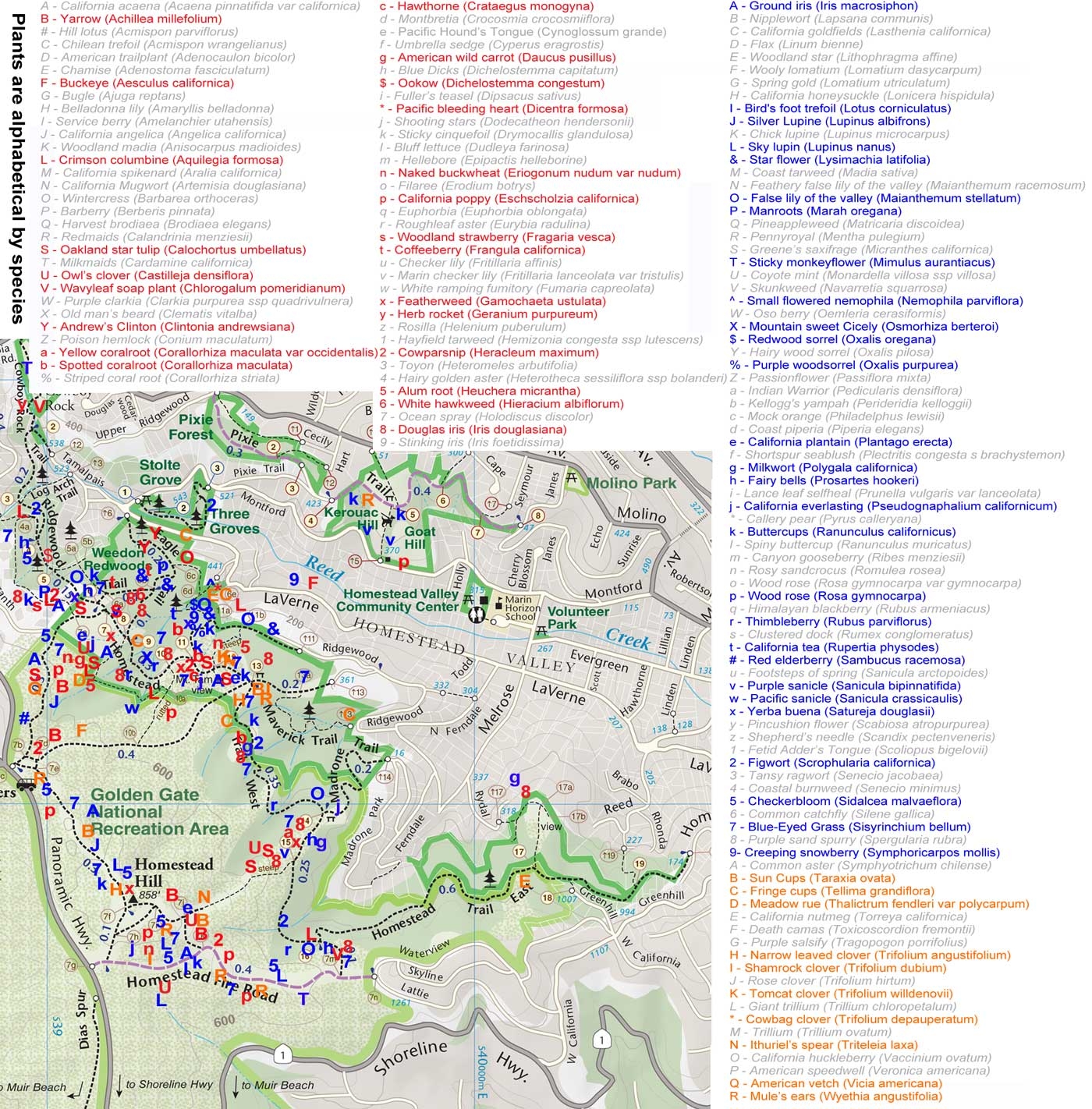
Gallery of wildflowers and plants found in Homestead.
*Non-native
Share this: